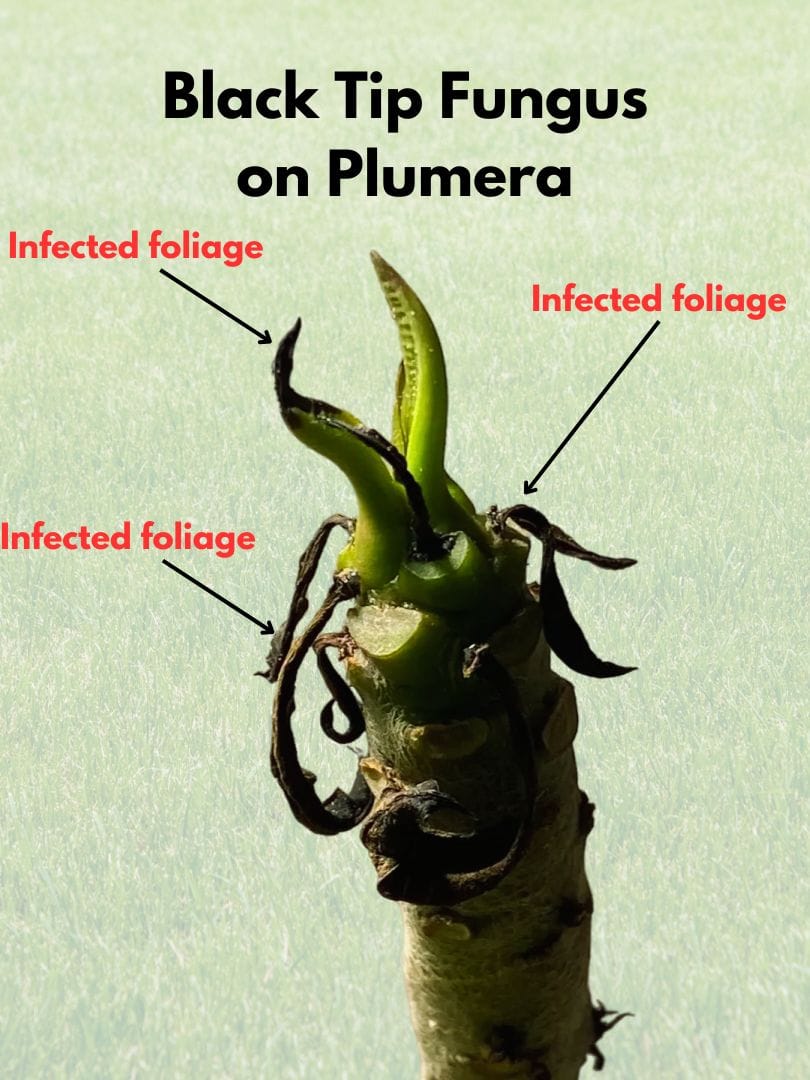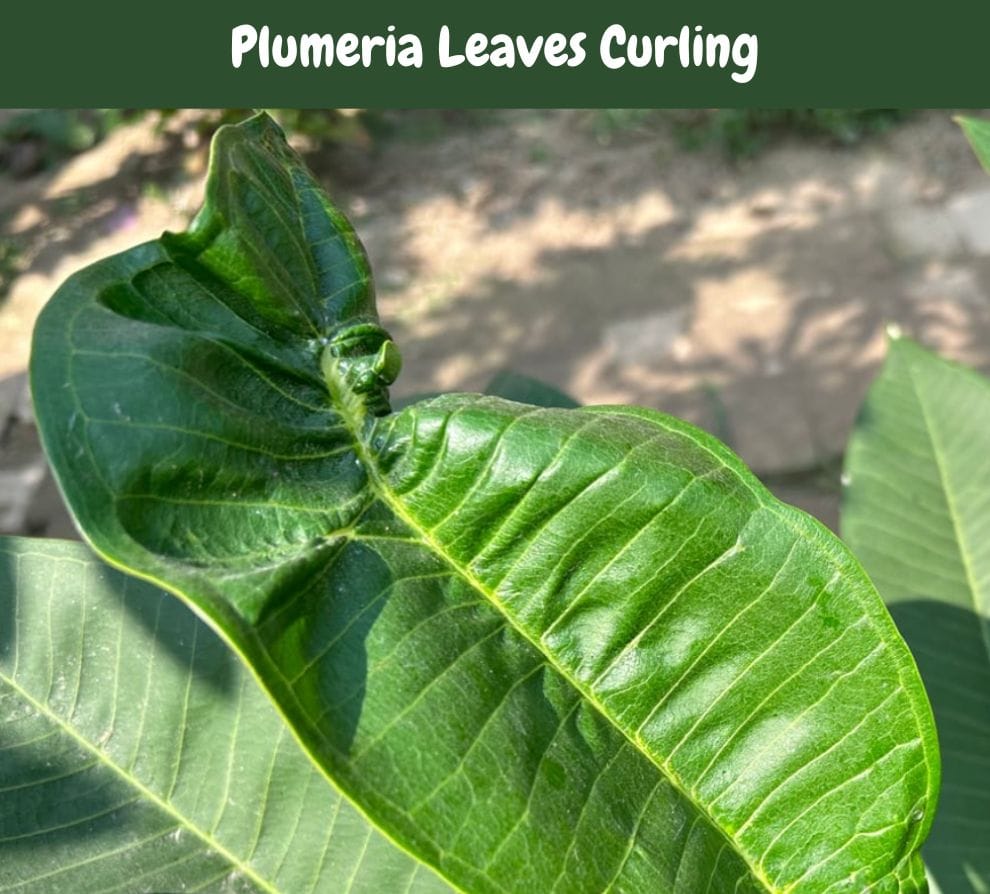
This page is dedicated to all the Plumeria growers who want to give their best to protect their Plumeria plants from pests and diseases. On this single article page, you will find a complete chart of all the major diseases of Plumeria with the symptoms and pictures.
You might be wondering how I found all the disease pictures of Plumeria.
I have grown over 40 Plumerias of different varieties. I am growing these in Zone 10. A lot of my family members are growing Plumeria in different zones. This helps me to gather more knowledge on Plumeria.
Whenever I witness a disease on the Plumeria plant, I take pictures and make myself busy with the treatment of that particular disease. Once I find the best working/tested remedy, I share it with you through my articles.
Those familiar with the website GardenVive already know how obsessed I am with Plumeria.
Plumeria diseases and problems with symptoms
| Disease | Symptoms |
|---|---|
| Powdery Mildew | White powder on leaves |
| Rust Fungus | Orange spots on leaves |
| Black Tip Fungus | Blackening of leaf tips |
| Root Rot | Wilting and yellowing |
| Stem Rot | Soft, mushy stems |
| Curling Leaves | Leaves curl inward or outward |
| Yellow Leaves | Leaves turn pale or yellow |
| Mealybugs | White, cottony masses on stems |
For those who have been patiently waiting for their Plumeria plant to bloom but are still without flowers: what to do when plumeria is not blooming.
I have all of those above-mentioned issues on my Plumerias. (Except powdery mildew)
Among all those problems, the hardest to cure is black tip fungus and stem rot.
Let's understand each of those diseases one by one with their symptoms, treatments, and pictures.
Powdery Mildew
Powdery mildew is a common disease on other plants but for plumeria, it is very unusual to see.
I have never seen powdery mildew on any of my Plumeria plants ever. I felt it would be worth sharing with you.
After spending a few hours of research on the internet, I found that someone reported the powdery mildew on Plumeria to the Florida Extension Plant Diagnostic Clinic in January 2017. The reference Link is given below:
First confirmed report of powdery mildew (Erysiphe sp.) on PlumeriaYou can find the picture of the leaves on that page as well.
Treatment:
If you ever notice white powdery substances like those, mix 1 tablespoon of baking soda with 0.5 tablespoons of liquid dishwashing soap in 2.5 liters of water. Now spray on all the infected areas. Repeat this twice a month and you can see good results after the first month.
Rust on Plumeria
Pathogenic fungi are responsible for Rust disease on the plumeria leaves.

Treatment: Mix water and Hydrogen peroxide and spray on your Plumeria plant. This will help to dissolve the rust faster.
To know more on this check my dedicated article on Plumeria rust - Treatment.
Black Tip Fungus

This is the hardest to treat if you are late identifying the disease. Once, your plant gets infected mostly the tips of the foliage or new leaves will start getting blackish. It will spread downwards and eventually kill that leaf.
If you leave it untreated for a longer time, the tip of the stem will rot and will spread further downwards.
Treatment: When you first notice this disease, apply fungicide.
You should cut the infected area before applying fungicide. If possible cut a few inches from the top. If you notice no white sap coming out from the stem it's alright, otherwise you will need to cut further down until you find white fluid coming out.
Curling Leaves

This is not actually a disease for a specific reason. There might be multiple reasons behind this.
My plumeria got infected with mealybugs and when they started sucking the juice, the leaves started to curl.
You can check my full article here: Plumeria Leaves Curling - All Possible Reasons and how to cure
You will find the pictures as well.
Treatments are based on the reasons, so I suggest you go through the given guideline link and treat accordingly.

Root rot and stem rot
In both of these cases, you will find rotten inner layers.
Stem rot
To check the stem rot, you can use your nails. Gently press your fingernail into the stem. If it feels soft and mushy without any white sap oozing out, its stem rot for sure.
Root rot
Root rot symptoms are:
- Yellow leaves
- Premature leaf falling
- Mushy roots. ( you can't see this unless you uproot your plant)
Treatment: Reduce watering, check if the water drainage system is working properly, and no waterlogging.
Add some dry ashes of straw or add some mulch that can absorb extra moisture from the soil.
You should check my watering guidelines for Plumeria.
If rot is severe, trim away the affected stems and salvage only the healthy sections to create cuttings suitable for propagation. In this way, you can propagate new plants from old rotted plants.
Here is the guideline: Grow plumeria from cuttings
Mealybugs on Plumeria

In warmer regions, it is a common pest that you can see in Plumeria.
Treatment: Fill a sprayer bottle with 1 liter of water. Mix in 15 ml of liquid dishwashing soap, followed by 3 tablespoons of chili powder and 3 tablespoons of turmeric powder.
Now it's time to spray on all affected areas and on the soil. It will kill the eggs on the soil as well.
Another easy remedy is to rub the affected areas with alcohol.
You can check more in detail here: Get rid of mealybugs on plumeria
Sooty mold
Once your Plumeria leaves and stems are infested by aphids or some other pests, they will leave honeydew on your plant. A special type of black fungus will appear then. It's known as sooty mold.

You can get more details here with treatments: Sooty mold on Plumeria
To learn more about Plumeria leaves yellowing, check: Why plumeria leaves turn yellow and the treatment
Note: It took me more than 10 years to experience and collect these pictures from my garden. To support my work, you may tip me from here: Give me a tip ( Even a small amount will be appreciated )






